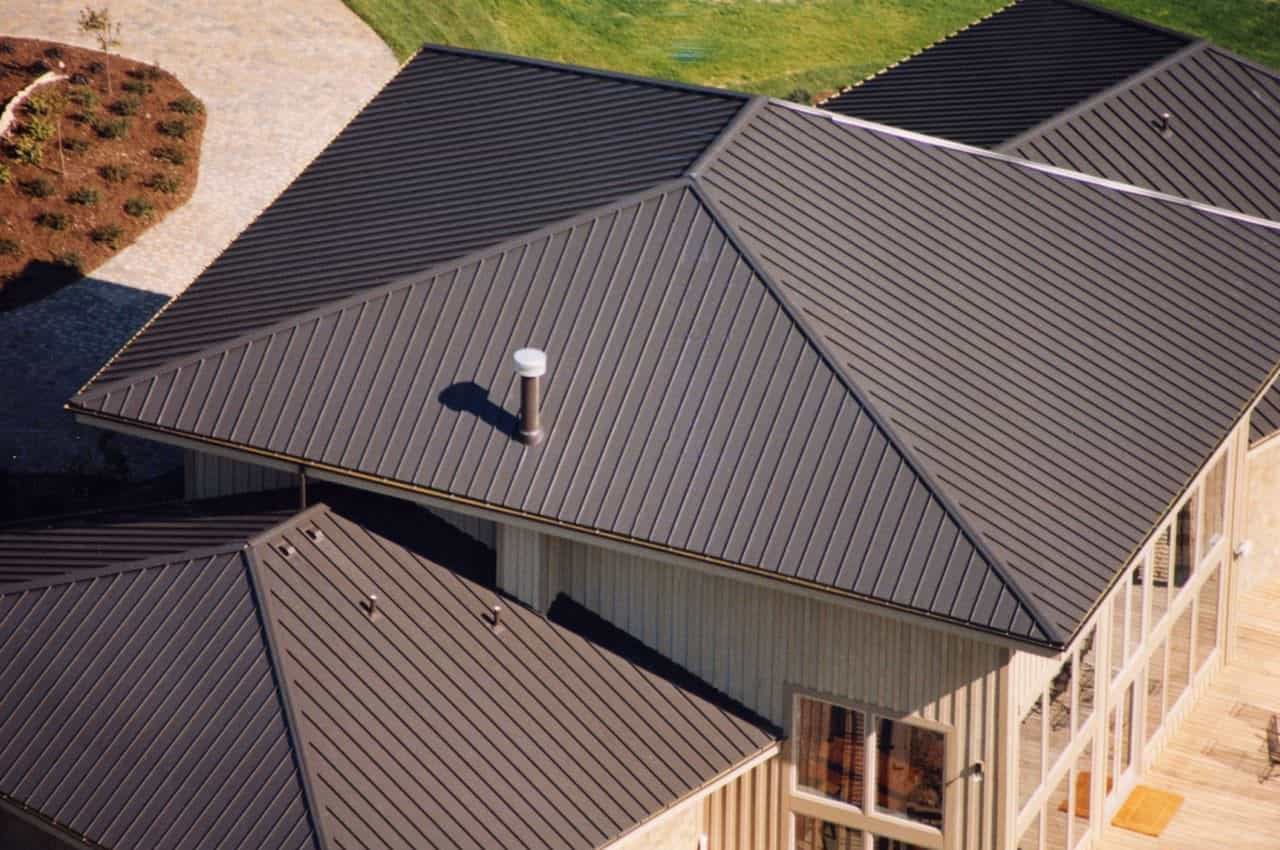Contents
Introduction
Metal roofing has become an increasingly popular choice for residential and commercial buildings due to its durability, energy efficiency, and aesthetic appeal. As a leading resource in the roofing industry, AllRoofing.info is committed to providing comprehensive information about metal roofing, helping you make informed decisions for your roofing needs.
This guide will explore the various types of metal roofing, their benefits, installation processes, maintenance tips, and how to choose the proper metal roofing for your property.
What is Metal Roofing?
Types of Metal Roofing
Metal roofing is made from various materials, each offering distinct advantages:
- Steel Roofing: Steel is one of the most common materials for metal roofing. It is durable, affordable, and can be coated with different finishes to enhance its resistance to corrosion and increase its lifespan.
- Aluminum Roofing: Known for its lightweight nature and resistance to rust, aluminum is an excellent choice for coastal areas. It effectively reflects heat, making it energy-efficient.
- Copper Roofing: Copper is a premium material with unmatched aesthetic appeal and longevity. Over time, it develops a unique patina, adding character to the building.
- Zinc Roofing: Zinc is another high-end material known for its self-healing properties. Scratches and minor damages can be recovered, maintaining the roof’s appearance and durability.
- Tin Roofing: Tin is less common today but was widely used in the past. Modern tin roofing often refers to terne-coated steel, which combines tin and lead to create a durable and rust-resistant material.
Styles of Metal Roofing
Metal roofing comes in various styles, allowing homeowners and businesses to choose the look that best suits their needs:
- Standing Seam Metal Roofs: These roofs have raised seams that interlock, providing excellent water resistance and a sleek, modern appearance.
- Metal Shingles: Designed to mimic traditional shingles, slate, or tile roofs, metal shingles offer the durability of metal with a more classic look.
- Corrugated Metal Roofs: Featuring a wavy pattern, corrugated metal roofs are often used in agricultural and industrial buildings but can also be applied to residential homes for a rustic aesthetic.
- Metal Tiles: These are designed to look like traditional roofing materials, such as clay or concrete tiles, but with the added benefits of metal.
Benefits of Metal Roofing
Durability and Longevity
The longevity of metal roofing is one of its biggest benefits. Depending on the material, metal roofs can last 40-70 years, far outlasting traditional asphalt shingles, which typically last 12-20 years. Metal is resistant to various elements, including wind, fire, and hail, making it a robust choice for any climate.
Energy Efficiency
By reflecting solar radiation, metal roofs can cut cooling expenses by 10% to 25%. Many metal roofing systems also include a reflective coating that further enhances energy efficiency, making them an eco-friendly option.
Environmental Impact
Metal roofing is highly recyclable. Many metal roofs contain a significant percentage of recycled material; at the end of their life, they can be fully recycled, reducing landfill waste. This makes metal roofing a sustainable choice for environmentally-conscious homeowners and businesses.
Aesthetic Versatility
Because metal roofing comes in so many different forms, hues, and finishes, it may go well with any type of architecture. Whether you prefer the look of traditional shingles or a sleek, modern appearance, there is a metal roofing option to match your aesthetic preferences.
Fire Resistance
Metal roofs have the best possible Class A fire rating since they are non-combustible. This makes them an excellent choice for areas prone to wildfires or where fire safety is a concern.
Low Maintenance
Metal roofing requires less upkeep than conventional roofing materials. They are insect and mildew resistant and do not decay, crack, or distort. Periodic inspections and minor repairs are typically all needed to keep a metal roof in excellent condition.
Installation Process
Preparation
The installation of a metal roof begins with thorough preparation:
- Inspection: A professional roofer will inspect the existing roof structure to ensure it can support the weight of the metal roofing. Any necessary repairs to the underlying structure should be completed before installation.
- Measurement: Accurate measurements are crucial for ordering the correct amount of materials. The roof area, including dormers, valleys, and other features, will be measured to determine the quantity of metal panels or shingles needed.
- Removing Existing Roofing: In some cases, the existing roofing material must be removed. However, metal roofing can often be installed over existing shingles, reducing labor and disposal costs.
Installation Steps
- Underlayment: A high-quality underlayment is installed over the roof deck to provide an extra layer of protection against moisture.
- Starter Strips and Flashing: To prevent water infiltration, starter strips are installed along the roof edges, and flashing is added around chimneys, vents, and other roof penetrations.
- Metal Panels or Shingles: The metal panels or shingles are installed, starting from the bottom edge and working upwards. Each piece is secured with fasteners designed for metal roofing, ensuring a tight and secure fit.
- Seams and Ridge Caps: The seams are crimped and sealed for standing seam roofs to prevent water leakage. Ridge caps are installed along the roof peak to complete the installation and provide a finished look.
- Final Inspection: A final inspection ensures the roof is installed correctly and all components are secure.
Maintenance and Care
Regular Inspections
Regular inspections are essential to ensure the longevity and performance of a metal roof. Homeowners should inspect their roofs at least twice yearly, in the spring and fall and after significant weather events. Look for signs of damage, such as loose or missing fasteners, dents, or scratches.
Cleaning
Keeping a metal roof clean can help maintain its appearance and prevent potential issues. Debris, such as leaves, branches, and dirt, should be removed regularly. A mixture of mild detergent and water, applied with a soft brush or cloth, can be used for more thorough cleaning.
Addressing Repairs
While metal roofs are highly durable, they may occasionally require repairs. Common issues include loose fasteners, minor leaks, or scratches. Addressing these problems can prevent more significant damage and extend the roof’s lifespan.
Protective Coatings
Protective coatings on metal roofs can enhance corrosion and UV damage resistance. To ensure continued protection, they should be reapplied as the manufacturer recommends.
Choosing the Right Metal Roofing
Factors to Consider
When selecting a metal roof, several factors should be taken into account:
- Material: Consider the pros and cons of different metals, such as steel, aluminum, copper, and zinc, and choose the one that best suits your needs and budget.
- Style: Choose a style that complements the architecture of your home or building. Whether you prefer standing seam, metal shingles, or corrugated metal, there is a style to match your aesthetic preferences.
- Color and Finish: Metal roofing comes in various shades and finishes. Consider factors such as energy efficiency, climate, and personal preference when selecting a color.
- Cost: While metal roofing can be more expensive upfront than traditional asphalt shingles, its longevity and low maintenance requirements often make it a more cost-effective choice in the long run.
- Climate: When choosing a metal roof, consider the environment in your area. Aluminum is an excellent choice for coastal areas due to its resistance to saltwater corrosion.
Hiring a Professional Roofer
While some homeowners may be tempted to install a metal roof themselves, hiring a professional roofer is highly recommended. Skilled roofers have the experience, tools, and knowledge to ensure a proper installation, which is crucial for the roof’s performance and longevity. When selecting a roofer, look for:
- Experience and Expertise: Choose a roofer with extensive experience in metal roofing installations and a proven track record of successful projects.
- References and Reviews: Check references and read reviews from past customers to gauge the roofer’s reputation and quality of work.
- Licensing and Insurance: Ensure the roofer is licensed and insured to protect yourself from liability in case of accidents or damage during the installation process.
- Warranty: Look for a roofer who offers a warranty on their artistry and any manufacturer warranties on the roofing materials.
Conclusion
Metal roofing offers numerous benefits, including durability, energy efficiency, and aesthetic versatility. By choosing the suitable material and style and ensuring proper installation and maintenance, a metal roof can provide long-lasting protection and enhance the value of your property.
At AllRoofing.info, we are committed to providing the information and resources you need to make informed decisions about your roofing needs. Whether you are considering a new metal roof or looking to maintain an existing one, we hope this guide has provided valuable insights into the world of metal roofing.
Ethan Cole is a versatile writer at hsnime.co.uk, offering fresh perspectives and engaging content across various topics. With a passion for creativity and knowledge, Ethan aims to provide insightful articles that resonate with a diverse audience.






